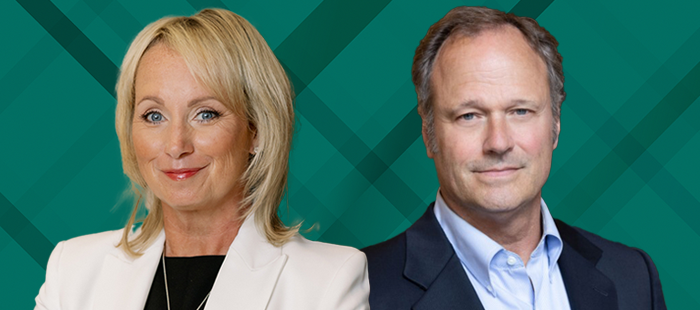Impact-Based Exec Ed: Expanding the Boardroom
- Participants work with seasoned executives to learn the basics of board governance and understand the challenges of being the only ones in the boardroom who look like them.
- A high percentage of participants in the initial cohorts currently sit on boards, and more are in the pipeline.
- The Leavey School of Business designed the two targeted programs to align with the university’s commitment to social justice.
The overwhelming majority of corporate boards are made up of white men. In 2020, according to a Deloitte report, 71.8 percent of Fortune 100 seats were held by men and 20.6 by minorities. What can a business school do to change those ratios?
The Leavey School of Business at Santa Clara University in California is hoping to answer that question with two executive education certificate programs launched in the past three years. In May 2019, we debuted our Women’s Corporate Board Readiness Program (WCBR), a community- and network-based program geared toward women of all ethnicities and backgrounds. In 2021, we created the Black Corporate Board Readiness Program (BCBR) in an effort to place more Black executives in the boardroom. Fittingly, the program launched in February, which is Black History Month in the U.S.
Both the WCBR and the BCBR programs consist of more than 40 hours of engagement over five weeks of intensive learning and mentorship. Participants learn the nuts and bolts of corporate governance, as well as how to build and leverage networks and how to market themselves as sought-after board members. WCBR additionally focuses on gender disparity in corporate governance and examines the experience of being a woman in the traditionally male-dominated boardroom, while BCBR considers the realities and responsibilities of being a Black board member.
With both programs, we wanted to bring visibility and networking opportunities to specific groups of qualified executives. We wanted to create programs with measurable impact that would accelerate the placement of these individuals on public and private boards. And we wanted to do it in two ways: by providing participants vulnerability-based learning in a safe space, and by giving them a chance to build communities, enjoy networking opportunities, and find champions.
Along the way, we’ve learned four valuable lessons about how to make sure such programs are successful.
1. Align With Existing Values
The ultimate role of any university-based executive education program is to generate discretionary revenue that can be used to support the institution’s mission. At Santa Clara, which is a private Jesuit university, part of that mission always has been a commitment to social justice.
I came to Santa Clara in March 2017 with a charge to revitalize, professionalize, and scale the executive education portfolio offered at Leavey’s Silicon Valley Executive Center. I brought with me a deep understanding of executive-level pedagogy and program design, empathy for the learner experience, and a range of competencies needed to rebuild a center. I had less understanding of the Jesuit approach to education, but I’ve always believed the best way for any organization to succeed is by sticking to its core organizational DNA.
I was faced with a clear question: How can the Leavey School use executive education programming to express our commitment to social justice? The answer was equally clear: We should champion diversity in the corporate governance space by enabling underrepresented voices to be heard in the boardroom.
2. Leverage Pressure Positively
Both of our board readiness programs were created under pressure, though the exact circumstances differed. While pressure is stressful, it also creates diamonds.
The initial idea for a woman’s board readiness program came from a member of the Leavey School’s advisory board who had heard a presentation I delivered during my first year at the school. She mentioned that she was on several corporate boards and was getting calls to consider joining others. Because she had no more capacity, she had begun referring other women who were clearly qualified but were not well-known in sitting director circles.
We needed to choose opportunities that would speak to the university’s commitment to social justice, and a women’s board readiness program was a perfect fit.
At the time, I was under pressure to select from the plethora of potential new program ideas that were coming in from across the university. I knew we needed to choose opportunities that would speak to the university’s commitment to social justice, and a women’s board readiness program was a perfect fit. The new offering, which launched six months later, helped completely reshape the direction of our executive education programming.
Ten months after the WCBR started, the COVID-19 pandemic began wreaking havoc on our organization. In this stressful situation, we learned that we could bring new concepts to fruition if we were agile, quick to pivot, and willing to remove obstacles.
The pressures of the pandemic coincided with social pressures that were mounting around race and gender. In the U.S., these pressures were intensified following the deaths of George Floyd and other African Americans at the hands of police. In this crucible, the idea of the BCBR was formed. Plans for the new program began to take shape in August 2020 during a series of meetings I had with a small group of Black corporate directors and business leaders. Also involved in the planning was Thane Kreiner, an entrepreneur who had run a number of life sciences startups and who was the former executive director of Santa Clara’s Miller Center for Social Entrepreneurship. Kreiner became the co-founder of BCBR.
For both board readiness programs, our desire to contribute to real change was a great incentive for us to expedite new ways of thinking. During these painful times, our executive education center gained clarity about who we were, why we existed, and what value we could offer to the business community and the greater society.
3. Build Community
It’s essential to bring together highly engaged stakeholders who have a shared vision for sustained change.
Both of our board readiness programs are facilitated by executives with lived experience. One hundred percent of the mentors for the BCBR are Black, and 100 percent of the mentors for the WCBR identify as women. In addition, while some of the program facilitators are Santa Clara University faculty who are governance experts, most of the modules are taught by seasoned subject matter experts who are either Black or women. Their presence helps build confidence among participants, who are likely to join corporate boardrooms where very few other members look like them.
But the community extends beyond mentors and facilitators. To expand opportunities for our participants, we collaborate with dozens of CEOs, executive search firms, professional service firms, and talent partners in the venture capital and private equity space. These partners want to help their clients and portfolio companies fill board seats with diverse candidates. We vet all of our partners carefully to ensure that their intentions and values align with ours and that they are equally committed champions of our collective work. We consider them a critical part of our community and our placement success.
4. Aim for Impact
By clearly identifying the impact our programs have on people, organizations, and society, we are able to enroll higher numbers of students and secure more support from employers.
The WCBR program, which will welcome its eighth cohort next spring, is composed of 140 alumnae members. The BCBR program, which is now moving into its seventh cohort, receives hundreds of applications to fill the 100 seats available across three offerings per year.
Today, 41 BCBR alumni now serve on corporate boards, and 17 alumni serve as facilitators, mentors, or advisors.
To hold ourselves accountable, we assess how many of our WCBR and BCBR alumni take seats on public and private corporate boards, and we follow their board trajectories once they are placed. We also provide continued education to help them navigate their ways to board leadership roles.
Today, 41 BCBR alumni now serve on corporate boards. That’s more than 70 percent of the participants in the inaugural BCBR program, and the participants in four succeeding cohorts are on a pace to meet or exceed that number. Additionally, 17 alumni have returned to the program to serve as facilitators, mentors, or advisors. Those outcomes are almost identical to the ones in the women’s program, where more than 20 alumni now support the program as facilitators, mentors, or advisors.
The Future of Executive Education
The role of business education is to help prepare the workforce for a modern world and to produce useful new knowledge for society. More specifically, the purpose of executive education is to allow a school to develop close connections to business communities, provide opportunities for faculty to collaborate with industry, and generate funds that sustain the university’s mission. Exec ed also acts as a testing ground for new programs and learning models that the university can consider adopting.
And executive education can have an additional impact outside of the university walls. It can aid business leaders in solving their most pressing challenges. It can create learning platforms that become tools for economic justice. And it can offer targeted programs that help all citizens uncover their full potential.
Our new board readiness programs at Santa Clara are examples of what executive education can accomplish when it actively engages stakeholders in a shared vision. A community of educators and executives working together can achieve social justice and shape the future of business.






